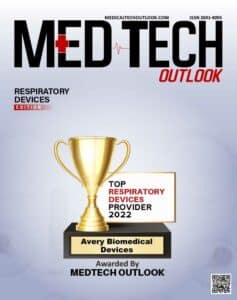Since the early 1970’s, Avery Biomedical Devices has implanted over 2,000 diaphragm pacing systems in patients world-wide. The device provides ventilator support for patients with chronic respiratory insufficiency whose diaphragm, lungs and phrenic nerves have residual function. Diaphragm Pacing with the Avery Diaphragm Pacing System also provides many benefits compared to mechanical ventilation (Positive Pressure Ventilation) and competitive devices.
Diaphragm Pacing Benefits with Avery Compared to Other Similar Devices
Though there are similarities between different methods of pacing the diaphragm, there are many advantages that set Avery apart from the competition.
- Full premarket approval from the FDA: To date, the Avery Diaphragm Pacing System is the only device with full pre-market approval from the USFDA use and CE marking privileges under the European Active Implantable Medical Device Directive for adult and pediatric use.
- No percutaneous wires through the skin: The Avery Diaphragm Pacing System uses implanted receivers that receive signals over intact skin, while other devices use wires passing directly through the skin. This means that Diaphragm Pacing with Avery presents a significant decrease in infection and does not present ongoing wound care management issues presented by other devices.
- Increased safety through bilateral redundancy: With the Avery Diaphragm Pacing System, each diaphragm is paced separately using separate components. This means that, unlike other devices, there is no singular failure point, providing an extra measure of safety.
- Ease of use: The Avery Diaphragm Pacing System is entirely self contained, meaning that it does not need a complicated external programmer, and the caregiver or patient can adjust the system as needed. There are also no special batteries needed. The Avery Diaphragm Pacing System uses standard alkaline batteries, which are readily available worldwide.
Diaphragm Pacing Benefits with Avery Compared to Positive Pressure Ventilation
Pacing is superior to mechanical ventilation because the inhaled air is drawn into the lungs by the diaphragm under negative pressure, rather than being forced into the chest under positive pressure.
- Cost Effective: The diaphragm pacing system costs significantly less than mechanical ventilation over the long term. The pacemaker can pay for itself in savings in 3-4 years, often sooner if a hospital admission is avoided from a condition like ventilator-induced pneumonia. The ongoing cost savings are typically about $20,000 per year. You can also read more about the cost savings of diaphragm pacing.
- Greater Freedom: There is a significant increase in mobilization with a diaphragm pacing system compared to large machines used for mechanical ventilation. Patients also enjoy normalized breathing and speech, an improved sense of smell, and greater ease in eating and drinking.
- Fewer Hospital Visits: Due to the decreased risk of respiratory infection, there is a significant reduction in costly and inconvenient hospital visits with the Avery Diaphragm Pacing System compared to traditional mechanical ventilation.
One of Avery’s patients who has experienced the benefits of diaphragm pacing, Chuck, was featured on Editions with Terry Bradshaw. Below is Chuck’s story and how diaphragm pacing with Avery has changed his life.
Please contact us for more information on the Avery Diaphragm Pacing System system.
The Avery Diaphragm Pacing System System
The Avery Diaphragm Pacing System System is the only diaphragm-pacing device with full pre-market approval from the USFDA and CE marking privileges under the European Active Implantable Medical Device Directive for adult and pediatric use. In addition, its system of using small implanted radiofrequency receivers rather than electrode wires that pass directly through the skin may decrease a patient’s risk of infection and ongoing wound care management issues.
Avery has been commercially distributing diaphragm pacing systems since the early 1970s. Since then, more than 2,000 patients have been implanted in over 40 countries establishing an unsurpassed record of safety and reliability.

